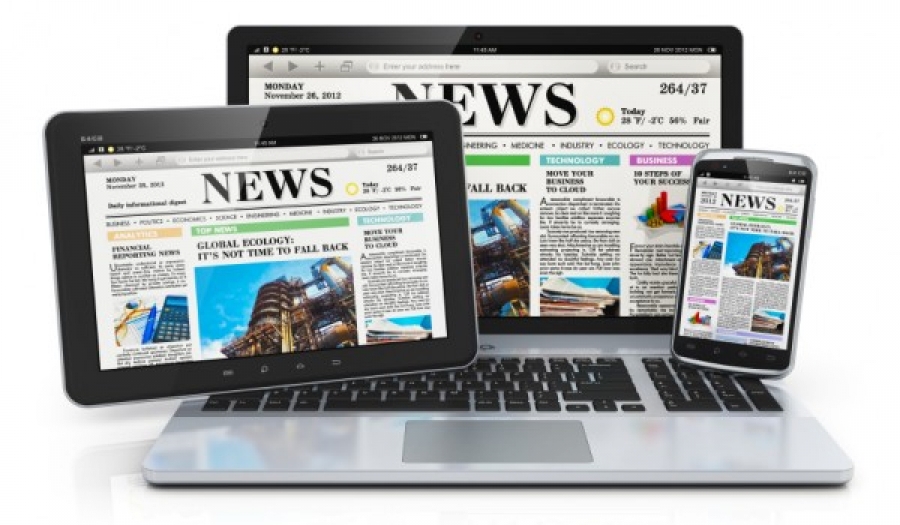Not known Factual Statements About Popular News
Not known Factual Statements About Popular News
Blog Article
Not known Facts About Popular News
Table of ContentsThe Ultimate Guide To Popular NewsThe Best Strategy To Use For Popular NewsPopular News - QuestionsSome Known Incorrect Statements About Popular News
Age is additionally a factor in the way individuals view the duty of social media. More youthful social media sites news consumers are most likely to state it has actually affected their learning for the better. Concerning fifty percent of social networks news consumers ages 18 to 29 (48%) state information on social media makes them better educated, compared to 37% of those 30 to 49, 28% of those 50 to 64, and 27% of those 65 and older.Reporters evaluate information worths when identifying whether to cover an occasion or announcement. Below are the values that we take into consideration when developing an outreach method. Probably one of the most crucial component of newsworthiness is whether or not the news product being connected effects a news electrical outlet's target market. Let's think of scientists have actually found an affordable remedy to a typical trouble.
Research on a state's new tax obligation code most likely will not create the very same interest across state borders. Occasionally experts can assist localize a larger nationwide tale that influences even more than simply a city or state.
If you are publishing newsworthy research study, loophole in MarComm before the post being released to ensure that the pitch can stress the latest component of the tale: the publication of the research. Occasions and news that entail prominent numbers are extra likely to produce media coverage. Sees from nationwide numbers commonly need months of preparation because of anticipated neighborhood passion.
The Only Guide for Popular News
Stories commonly entail some type of dispute. Necessarily, these tales are virtually constantly debatable to some extent. The good news is, college personnel and professors are typically regarded as impartial experts. We can aid alleviate potential reputational danger with these stories while likewise boosting the chances of generating coverage. While most of the above news worths are intertwined, human interest stories typically differ.
Human rate of interest elements can add news worth to other stories that could show up to be doing not have in the other values. The novelty or anomaly of a scenario can assist influence whether an information outlet is most likely to cover a story. While this is not an extensive list, examining to see if your story or event has these high qualities prior to contacting us will certainly assist you determine which components hold the most news worth.

Examine This Report about Popular News
There is likewise significant proof that even more customers might start to pay for information in the futureif authors can recognize them and serve them well. Fifty percent of those that do not pay for news actively look for news and look like clients in various ways. And almost 2 in 10 of those who do not register for news now indicate they are inclined to start to pay in the future.
We then ask a collection of questions to determine whether individuals spend for certain sorts of news resources (Popular News). We asked people to call the sources they use most oftenwhether they pay for them or nothow they use them, the particular things they think about crucial regarding them, and some related questions concerning the expense and value of that resource
People are drawn to news as a whole for 2 reasons over others: A wish to be educated citizens (newspaper browse around this site clients particularly are very motivated by this) and because the publication they register for excels at covering particular subjects about which those clients especially care. While there are a host of reasons, the No.
Greater than 4 in 10 additionally point out the truth that buddies and household register for the exact same item (Popular News). More than a third of individuals say they initially subscribed in response to a price cut or promotion. In print, individuals likewise are relocated heavily to subscribe to obtain coupons that conserve them money, something that has untapped ramifications in digital
Excitement About Popular News
About fifty percent are "news applicants," suggesting they proactively seek news rather than mainly bumping right into it in an extra easy means, though the information that nonpayers are looking for (for currently, at least) is usually regarding national politics. Like clients, a lot of these people likewise get information numerous times a day, use the news in means comparable to clients, and want similar subjects, including international or worldwide news.

Of those who do pay, 54 percent register for newspapers in print or digitally, which stands for 29 percent of news Americans in general. The majority of them purchase a print publication together with their paper and spend for two to 4 news sources in total, some a lot more. And while 53 percent are long-time clients (5+ years), even more than a quarter (27 percent) have purchased their paper registration within the past year.
Few print subscribers believe it likely they will switch over to a digital-only subscription in the future, and over half of those that favor electronic have never spent for a print version of the same source. Totally 75 percent of paper payers state they mostly reviewed the paper in print, while 21 percent are mostly digital individuals, and 4 percent describe themselves as equally split.
Report this page